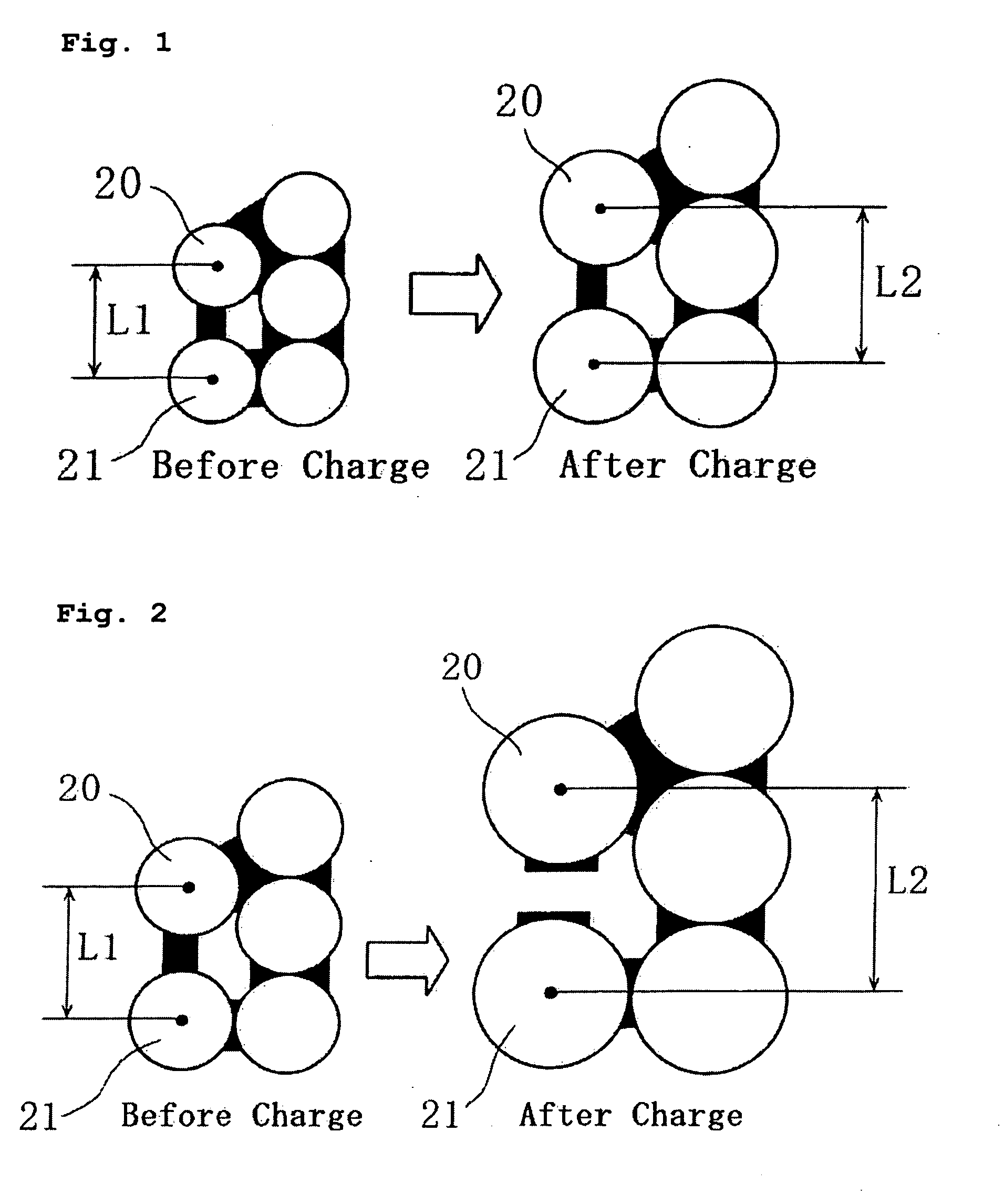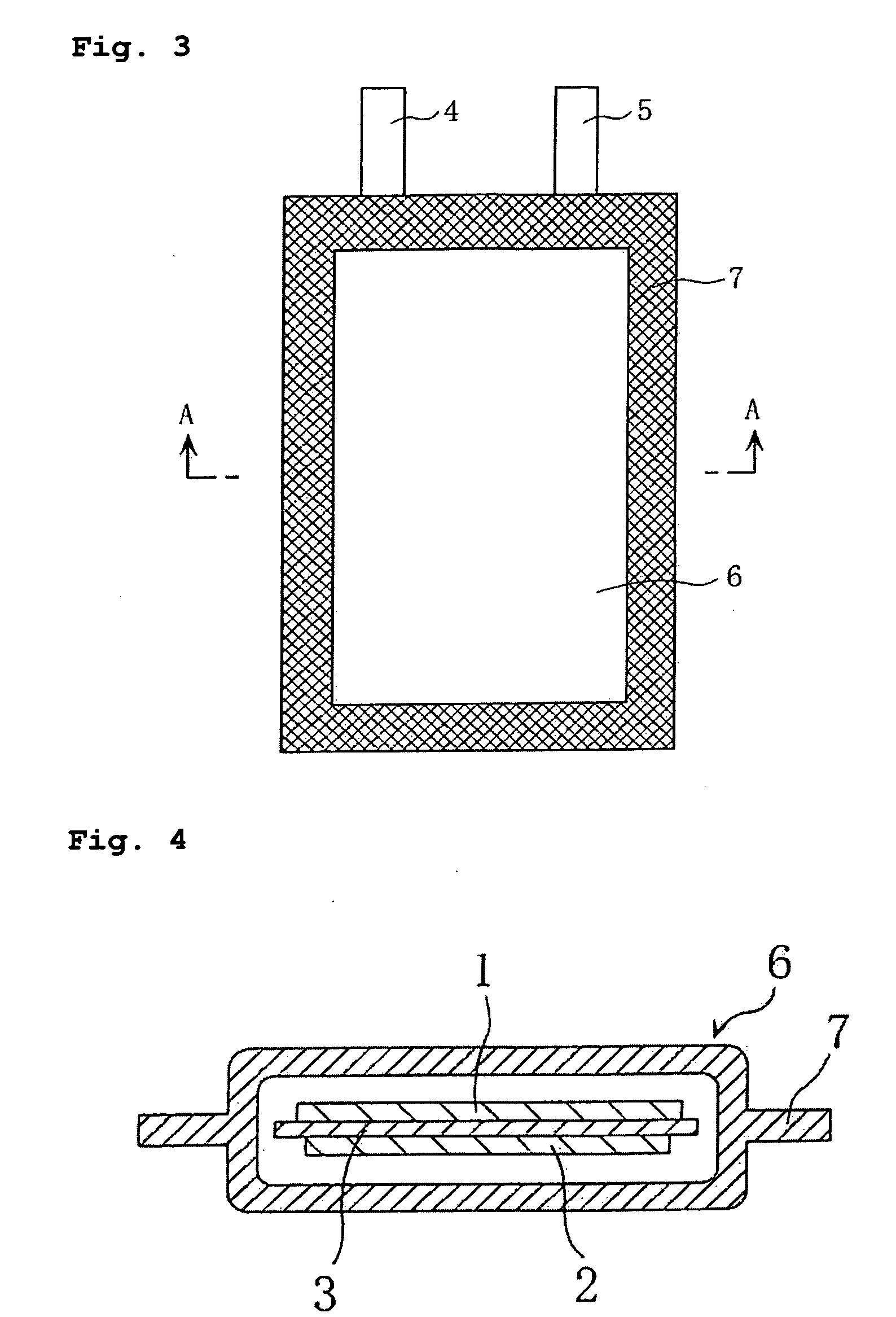Lithium secondary battery
a secondary battery and lithium battery technology, applied in the direction of cell components, final product manufacturing, sustainable manufacturing/processing, etc., can solve the problems of poor charge-discharge cycle performance, degradation of current collection performance within the electrode, and insufficient improvement in initial charge-discharge efficiency, etc., to achieve the effect of improving the initial performan
- Summary
- Abstract
- Description
- Claims
- Application Information
AI Technical Summary
Benefits of technology
Problems solved by technology
Method used
Image
Examples
first embodiment
Example A1
[0096] A lithium secondary battery was fabricated according to the above-described preferred embodiment of the invention.
[0097] The battery thus fabricated is hereinafter referred to as Battery A1 of the invention.
examples a2
and A3
[0098] Lithium secondary batteries were fabricated in the same manner as in Example A1, except that the particle sizes of the negative electrode active material Si powder (before being charged) were 7.5 μm and 10.0 μm, respectively.
[0099] The batteries thus fabricated are hereinafter referred to as Batteries A2 and A3 of the invention, respectively.
second embodiment
Examples B1 to B4
[0116] Lithium secondary batteries were fabricated in the same manner as in Example A1 of the first embodiment, except that the particle sizes of the negative electrode conductive agent, graphite, were 3.4 μm (BET specific surface area: 12.5 m2 / g), 3.7 μm (BET specific surface area: 14.2 m2 / g), 5.3 μm (BET specific surface area: 10.5 m2 / g), and 12.0 μm (BET specific surface area: 7.7 m2 / g).
[0117] The batteries thus fabricated are hereinafter referred to as Batteries B1 to B4 of the invention, respectively.
Comparative Example Y
[0118] A lithium secondary battery was fabricated in the same manner as in Example A1 of the first embodiment, except that the particle size of the negative electrode conductive agent, graphite, was 20.0 μm (BET specific surface area: 5.4 m2 / g)
[0119] The battery thus fabricated is hereinafter referred to as Comparative Battery Y.
[0120] Experiment
[0121] Batteries B1 to B4 of the invention and Comparative Battery Y were charged and dischar...
PUM
| Property | Measurement | Unit |
|---|---|---|
| particle size | aaaaa | aaaaa |
| particle size | aaaaa | aaaaa |
| BET specific surface area | aaaaa | aaaaa |
Abstract
Description
Claims
Application Information
 Login to View More
Login to View More - R&D
- Intellectual Property
- Life Sciences
- Materials
- Tech Scout
- Unparalleled Data Quality
- Higher Quality Content
- 60% Fewer Hallucinations
Browse by: Latest US Patents, China's latest patents, Technical Efficacy Thesaurus, Application Domain, Technology Topic, Popular Technical Reports.
© 2025 PatSnap. All rights reserved.Legal|Privacy policy|Modern Slavery Act Transparency Statement|Sitemap|About US| Contact US: help@patsnap.com



